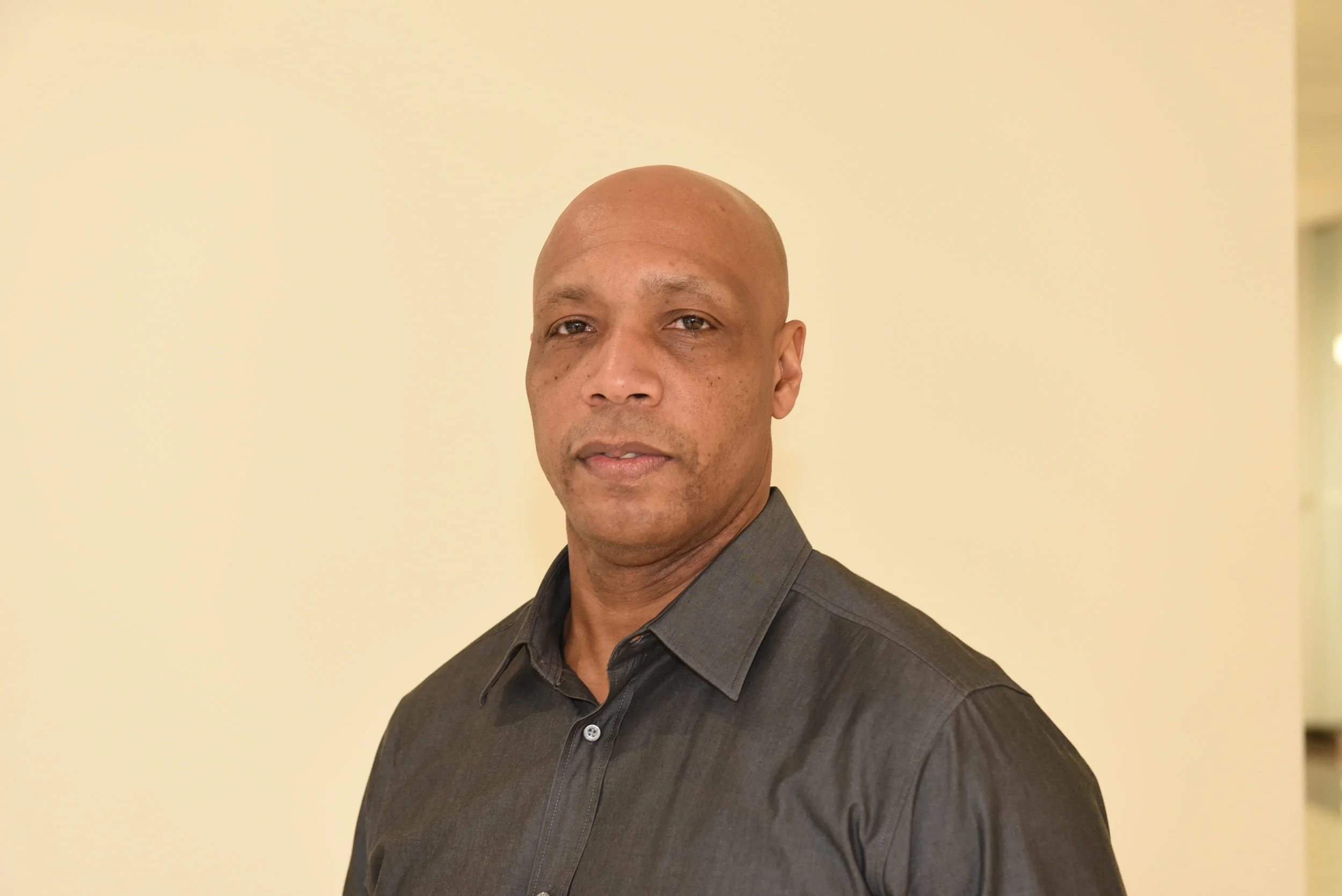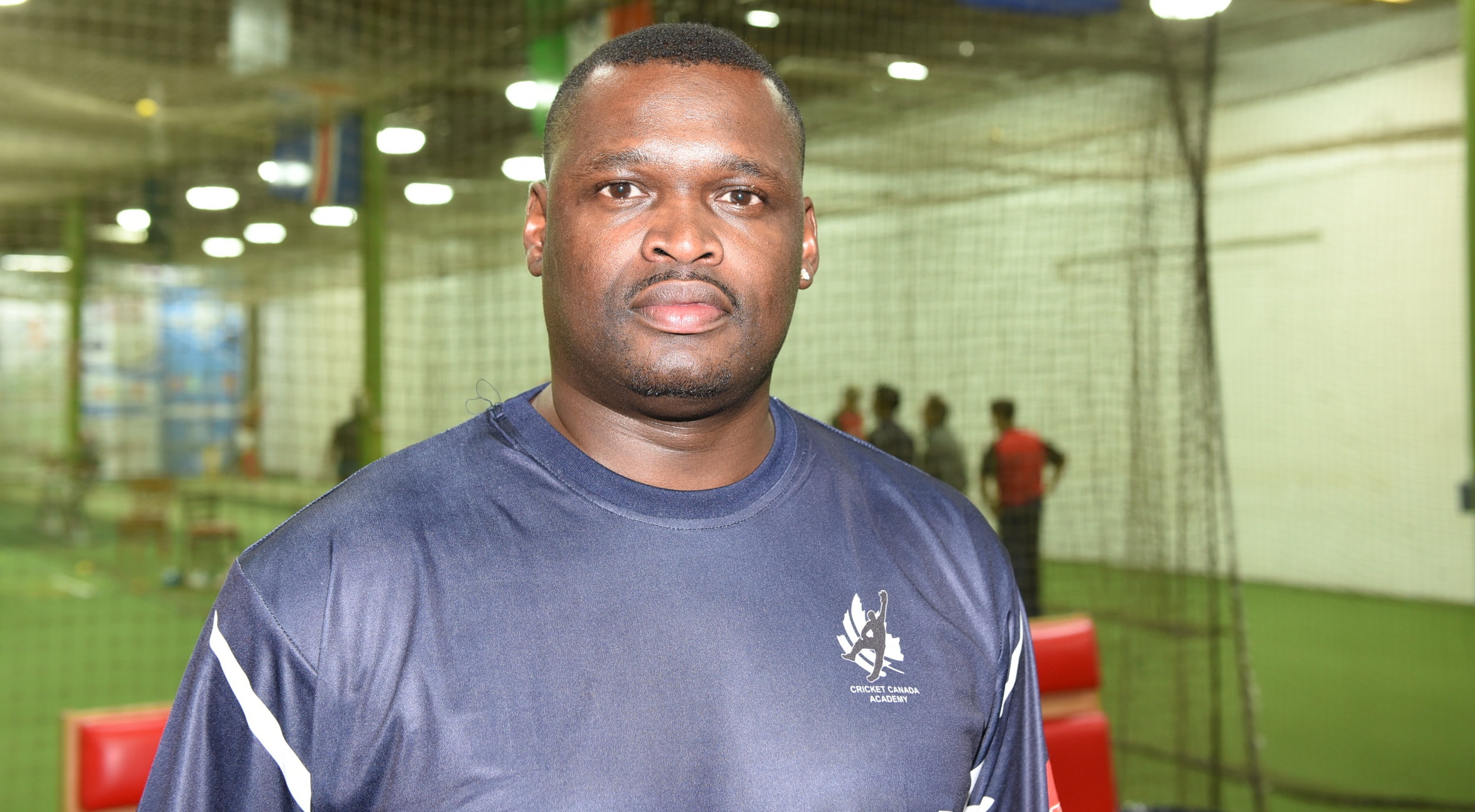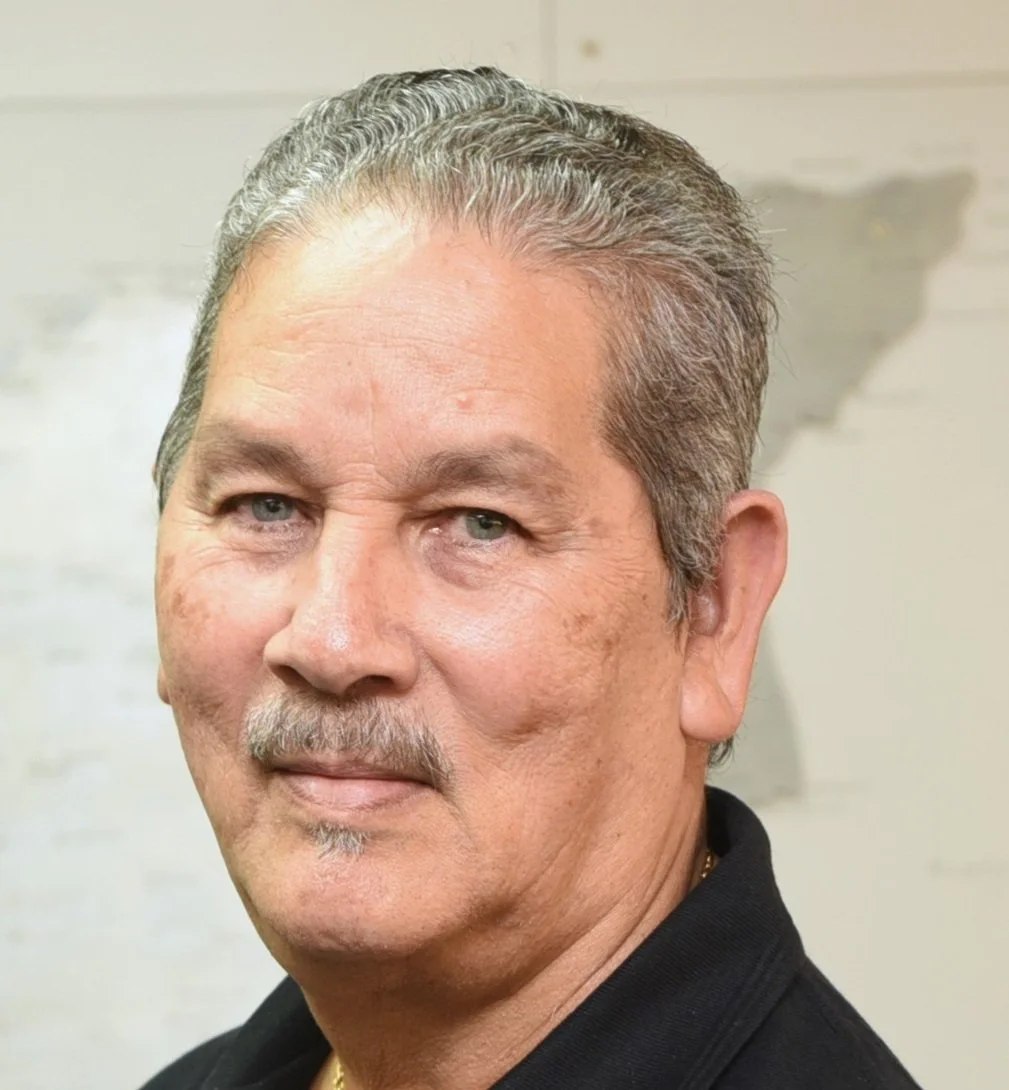Anderson Cummins enjoying life after cricket
April 8, 2017
Plantation work can be gruelling and dehumanizing.
When retired West Indies cricketer Anderson Cummins saw the demanding conditions under which his mother toiled daily to provide for the family, he vowed not to follow in her footsteps.
“I was about 11 or 12 when she took me to work one day,” he recalled. “When I saw what she endured to earn money, I said, ‘God, please never let me do this. I have to do better’.”
His prayer was answered.
Graduating from the University of the West Indies (UWI) with a physics degree, he worked in the banking sector in Barbados for a few years before switching careers at the end of his first-class cricket career just over two decades ago.
Cummins completed a Microsoft systems programming correspondence course and a two-year computer information systems diploma program at DeVry Institute of Technology in Toronto prior to plunging into the information technology sector.
After a year as the lead webmaster at Canoe Inc. and eight years serving in various management capacities at Air Miles Canada, he fulfilled several contracts as a senior security consultant and project lead in the IT industry before landing at SecureKey Technologies Inc. last April as the compliance director.
Launched nine years ago, the company -- which has also offices in Boston and San Francisco -- is a leader in identity authentication.
In his new role, Cummins ensures that the company is conducting its business in full compliance with national and international laws and regulations pertaining to the industry while upholding professional standards.
“Someone in the industry saw the job opening and said it would be a good fit for me,” said Cummins who has resided in the Greater Toronto Area since 1996 with his wife and their three sons. “At the time, I was not on contract, so I applied and was successful. What I like the most about this organization is that the work they are doing here is cutting edge.”
Armed with project management professional, information systems security professional, information security manager and IT infrastructure library certifications and his Bachelor of Science degree, Cummins is one of the few former West Indies cricketers that have gone on to pursue successful professional careers outside the sport.
In the seven years between graduating from Cave Hill and moving to Canada, he had an interesting cricket career.
Injured in 1990, Cummins made his Barbadian senior team debut the following season without representing his country in the regional junior tournament. The selection paid instant dividends with the newcomer claiming 23 wickets (av. 19) which was three less than Clyde Butts who was the leading wicket-taker that season.
The individual success translated into team triumph as Barbados dominated the inaugural regional Red Stripe Cup competition, finishing 35 points ahead of runner-up Trinidad & Tobago.
“That was probably one of my best seasons,” said Cummins. “To get the opportunity to play alongside Malcolm Marshall, who was my idol, Desmond Haynes and Gordon Greenidge, was just an unbelievable experience. I played through that season with an ankle injury and took volatren nightly to ease the pain. I was prepared to do whatever was necessary just for the opportunity to be teammates with those great players.
“That was a special team. In the dressing room, the veterans encouraged all the players to make verbal contributions. When the discussion came up about who was going to bowl the new ball first, I put my hand up and said, ‘I would’. I remember Malcolm bursting into laughter and pulling me aside to say, ‘I love that attitude, but be careful youngster because it could get you into hot water’. The only other time that I was urged to be part of any team discussion was when I played for the Young Men’s Progressive Club (YMPC) in the Barbados league.”
The immediate success led to his selection for the 1992 World Cup co-hosted by Australia and New Zealand where Cummins was the West Indies leading bowler with 12 wickets. Expecting to make his Test debut a few weeks later at home in a one-off contest against South Africa, the selectors opted for Antiguan medium pacer Kenny Benjamin.
The perceived snub of the home player led to protests of the first official Test between the teams.
Upon learning of his omission, Cummins headed to England to take up a contract with a club team in Birmingham.
“I was disappointed that I didn’t make the side, but I had no idea that people were protesting until I got to England and turned on the TV,” he said. “I was overwhelmed to see the support and didn’t know how to react. Probably, I should have come out and said something to calm down the situation.”
In 1993, Cummins played in the first of his five Tests against Australia at Perth, graced the cover of the West Indies Players Guide first edition and met his wife while touring Sri Lanka later that year.
Shivanthi Cummins, a relative of former Sri Lanka medium pacer Rumesh Ratnayake, was back home on vacation.
“She was already living in Canada when I ran into her at a nightclub,” Cummins recounted of their first meeting. “When I tried to approach her, she blew me off. The next day after a game, I was just about to board the team bus when Roger Harper (former West Indies player) tapped me on the shoulder and pointed her out to me not too far away. I told the driver to hang on and when she saw me, she smiled, we talked for a bit and then exchanged phone numbers.”
They stayed in touch and eventually tied the nuptial knot. The couple has three boys who relish playing basketball.
Isaiah is a second-year-guard at McGill University pursuing computer science studies, 16-year-old Denzel is enrolled in London’s Basketball Academy and Anderson Jr. plays for a recreational league his father coaches.
“As my boys started to develop a passion for the sport, I grew to love it too and eventually ventured into coaching,” said Cummins who has an older son in Barbados. “That’s what keeps me busy when I am not working.”
Two years before coming to Canada, Cummins was on the cricket field when Brian Lara created history.
In the fifth game of the season against Warwickshire, Durham ran into the red-hot left-handed batsman who had scored seven centuries in his last eight innings, including a Test record 375 six weeks earlier against England in Antigua.
Bowled by a Cummins no-ball when he was on 12, dropped six runs later by the wicketkeeper and again at 283 by Cummins at mid-off, Lara went on to become the first and only batsman to record 500 runs in a first-class innings.
“The wicket was flat and we were down a few bowlers due to injury,” said Cummins who scored 62 and was involved in a then record eighth wicket stand of 134 with David Graveney in Durham’s total of 556-8 declared. “Our guys were really worried about Lara and how we were going to get him out. I told them not to worry because I felt I had an idea of how to work him out which is something I picked up from Malcolm (Marshall) who was a master at that. Very early in his innings, Brian went across his wicket. It was really exaggerated and my thinking was that I could pull him far over enough and then just sink everything I got into a leg stump delivery which I did except it was a no-ball.”
He almost removed Lara with his first ball when the batsman’s attempted pull shot looped just inches over the bowler’s outstretched hands.
Settled in Canada nearly a decade after retiring from cricket, Cummins was lured back to the sport through co-incidence.
While mowing his lawn, a neighbour recognized him and asked if he was still playing the sport.
“When I told him I wasn’t, he convinced me to come out and help a young player (Abdool Samad) with potential and was close to making the national team,” said Cummins who started Anderson Cummins Consultancy Inc. in November 2009. “I agreed and really enjoyed being back in the game again.”
He joined Cavaliers and, a few months later, was selected to represent Canada at a World Cup qualifier in Kenya. Canada advanced and included him in the side for the 2007 World Cup in the West Indies.
“I still felt good even though it took a lot of hard work to get back into shape,” said Cummins who joined Kepler Wessels, Ed Joyce and Eoin Morgan as the only players to represent two countries in the World Cup. “I consulted with someone whose opinion I respect and he asked me, ‘What if you fail?’ I thought about what he said and told myself if I did it, there wasn’t going to be any failure. I looked at it as a unique opportunity. I think with a little bit more preparation, I might have done a little bit better.”
One of the oldest players in the tournament at age 40 and 11 years removed from his last One-Day International, he took two wickets in three matches before retiring for the second and last time
Cummins planned to spend five years in Canada before returning to settle in Barbados.
Sometimes, plans change and, in this case, he doesn’t mind because he and his family are enjoying life here.






